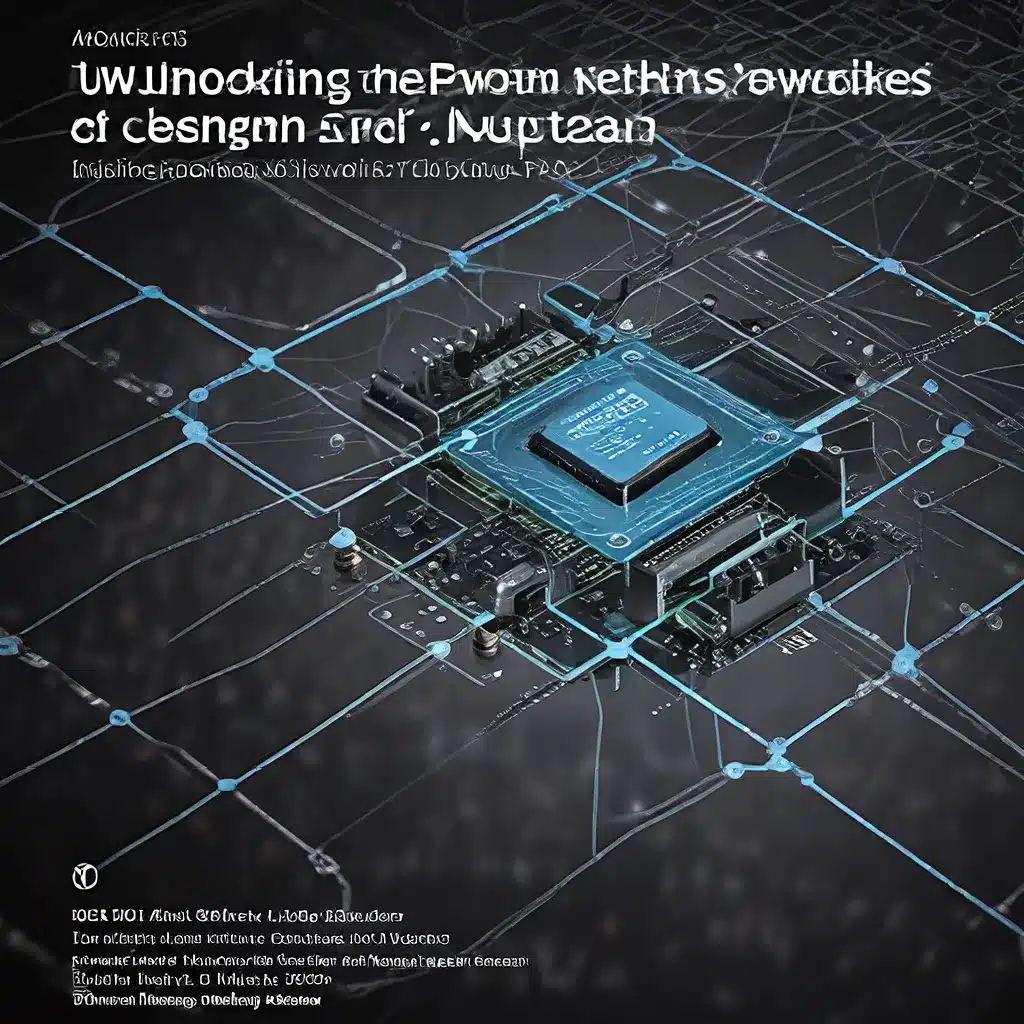
Revolutionizing Sensor Network Architectures
Sensor networks have become a fundamental component of the Internet of Things (IoT) ecosystem, enabling a wide range of applications across industries. From smart cities and industrial automation to environmental monitoring and healthcare, these interconnected systems are transforming the way we interact with and understand the world around us.
At the heart of these advancements lies the continuous evolution of sensor network design and architecture. Researchers and engineers are exploring innovative approaches to optimize the performance, scalability, and resilience of sensor networks, unlocking new possibilities for IoT applications.
One such development is the hierarchical sensor network architecture, which incorporates multiple tiers of sensor nodes, gateways, and central processing units. This design leverages the strengths of different node types, allowing for efficient data collection, processing, and communication. By distributing tasks across the network, hierarchical architectures can enhance energy efficiency, reduce latency, and improve overall system reliability.
Innovations in sustainable bio-based materials and manufacturing processes are also shaping the future of sensor networks. The development of energy-harvesting technologies and low-power sensor nodes is enabling the deployment of sensor networks in remote or hard-to-reach areas, where traditional power sources may be scarce or inaccessible.
Expanding IoT Applications with Sensor Networks
As sensor network technologies continue to evolve, the scope of IoT applications is expanding rapidly. These interconnected systems are enabling new levels of data-driven decision-making, real-time monitoring, and automated control across a wide range of industries.
In the realm of smart cities, sensor networks are being leveraged to optimize traffic management, waste collection, and energy distribution. By gathering data from traffic sensors, waste management systems, and utility meters, city planners can make informed decisions to improve efficiency, reduce costs, and enhance the quality of life for residents.
Biotechnology is also playing a crucial role in transforming the chemicals industry, with sensor networks enabling the real-time monitoring of production processes and the optimization of sustainable biomanufacturing techniques.
In the healthcare sector, wearable sensors and implantable devices are revolutionizing patient monitoring and personalized medicine. By continuously tracking vital signs, activity levels, and other physiological data, these sensor-equipped devices enable early detection of health issues, facilitate remote patient care, and support the development of predictive analytics for personalized treatment plans.
Addressing Sensor Network Security Challenges
As the adoption of sensor networks and IoT technologies continues to grow, the security of these systems has become a critical concern. Malicious actors can exploit vulnerabilities in sensor nodes, communication protocols, and data processing platforms, potentially compromising the integrity of sensitive information and disrupting critical infrastructure.
To address these challenges, researchers and industry leaders are exploring advanced encryption techniques, secure communication protocols, and decentralized architectures for sensor networks. Blockchain technology, for example, is being investigated as a means of enhancing the security and transparency of IoT data management and transactions.
Innovations in 5G network infrastructure are also paving the way for improved connectivity and lower latency in sensor networks, enabling more robust real-time applications and enhanced security measures.
Optimizing Energy Management in Sensor Networks
Energy management is a critical consideration in the design and deployment of sensor networks, as these systems often operate in remote or resource-constrained environments. Innovative approaches to energy harvesting, power optimization, and distributed processing are playing a crucial role in extending the operational lifespan of sensor nodes and ensuring the sustainability of IoT applications.
Solar, wind, and thermal energy harvesting technologies are being integrated into sensor nodes, allowing them to generate their own power and reducing the need for battery replacements or grid connections. Additionally, low-power sensor designs and energy-efficient communication protocols are helping to minimize the energy consumption of individual nodes, leading to more efficient and scalable sensor network deployments.
Advancements in edge computing and distributed processing are also contributing to improved energy management in sensor networks. By performing data analysis and decision-making at the edge, near the source of the data, sensor networks can reduce the need for constant data transmission to centralized servers, leading to lower energy consumption and reduced bandwidth requirements.
Conclusion: Unlocking the Future of Sensor Networks and IoT
As sensor network technologies continue to evolve, the possibilities for IoT applications are expanding exponentially. From smart cities and industrial automation to healthcare and environmental monitoring, these interconnected systems are transforming the way we interact with and understand the world around us.
However, the security and energy management challenges associated with sensor networks must be addressed to ensure the long-term sustainability and reliability of these systems. By embracing innovative architectural designs, advanced security protocols, and energy-efficient technologies, the sensor network and IoT community can unlock the full potential of these transformative technologies.
Sensor-Networks.org is at the forefront of these advancements, providing a platform for the exchange of knowledge, the exploration of cutting-edge research, and the collaboration between industry leaders, researchers, and enthusiasts. Join us as we continue to unlock the power of sensor networks and drive the future of the Internet of Things.